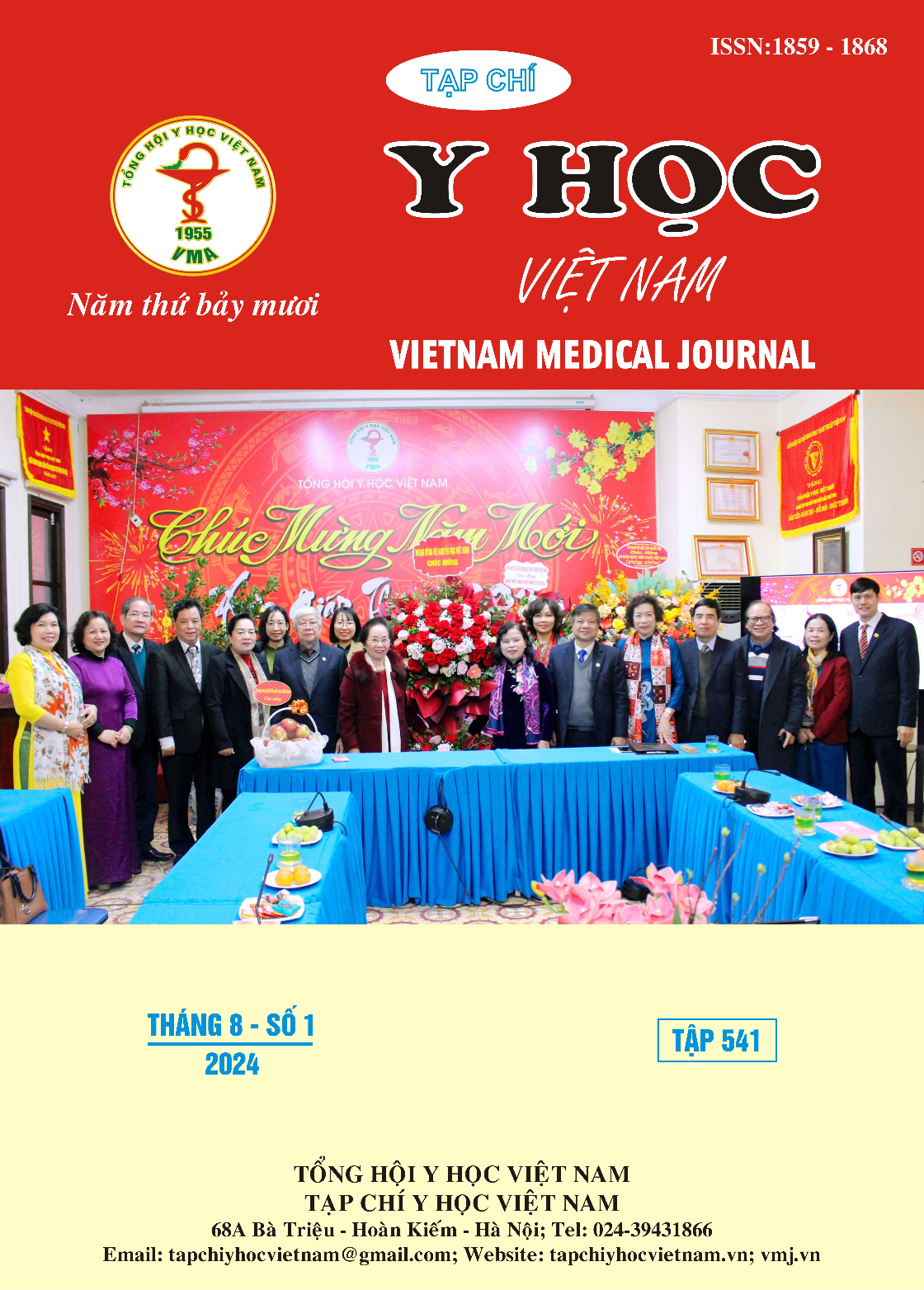BILIARY BLEEDING AND INTERVENTIONAL RADIOLOGY TREATMENT AT HANOI MEDICAL UNIVERSITY HOSPITAL
Main Article Content
Abstract
Percutaneous biliary interventions (PBIs) include biliary drainage, biliary stenting, biliary lithotripsy, and biliary biopsy… These are techniques that require percutaneous transhepatic puncture. Although PBIs are relatively safe with a low complication rate, bleeding complications can still occur. The bleeding can be caused by injury to the hepatic artery, portal vein, hepatic vein, or hepatic parenchyma. The method of hemostasis also varies depending on the source of bleeding. This study describes a series of clinical cases related to bleeding complications of PBIs and the experience of managing these complications. Objectives: To report the characteristics of bleeding complications due to PBIs and management experiences. Subjects and methods: A cross-sectional descriptive study on 26 patients (18 women/8 men) with bleeding complications due to PBIs at Hanoi Medical University Hospital from March 2020 to January 2023. Result: 26 patients with bleeding complications from hepatic artery, portal or hepatic vein, liver parenchyma accounted for 8 (30,8%), 7 (26,9%), 11 (42,3%), respectively. The patients with bleeding from the artery were diagnosed by CT scan and angiography, and following with transarterial embolization, in which 1 patient had to be directly punctured to embolize the pseudoaneurysm for the second time. Cases of bleeding non - hepatic artery were managed by tract - embolization using surgicel. Overall success rate reaches 100%. Conclusion: Bleeding after PBIs caused by damage of the liver blood vessels or the hepatic parenchyma. Hepatic artery injury can be managed by transarterial embolization, and non-hepatic artery bleeding can be embolized the tract with surgicel.
Article Details
Keywords
Bleeding complications, percutaneous biliary interventions, biliary lithotripsy, embolization, coil, surgicel
References
2. Pulappadi VP, Srivastava DN, Madhusudhan KS. Diagnosis and management of hemorrhagic complications of percutaneous transhepatic biliary drainage: a primer for residents. Br J Radiol. 2021; 94(1120): 20200879. doi:10.1259/bjr. 20200879
3. Saad WEA, Wallace MJ, Wojak JC, Kundu S, Cardella JF. Quality Improvement Guidelines for Percutaneous Transhepatic Cholangiography, Biliary Drainage, and Percutaneous Cholecystostomy. Journal of Vascular and Interventional Radiology. 2010;21(6):789-795. doi:10.1016/j.jvir.2010.01.012
4. Molina H, Chan MM, Lewandowski RJ, Gabr A, Riaz A. Complications of Percutaneous Biliary Procedures. Semin Intervent Radiol. 2021;38(3): 364-372. doi:10.1055/s-0041-1731375
5. Saad WEA, Davies MG, Darcy MD. Management of Bleeding after Percutaneous Transhepatic Cholangiography or Transhepatic Biliary Drain Placement. Techniques in Vascular and Interventional Radiology. 2008;11(1):60-71. doi:10.1053/j.tvir.2008.05.007


